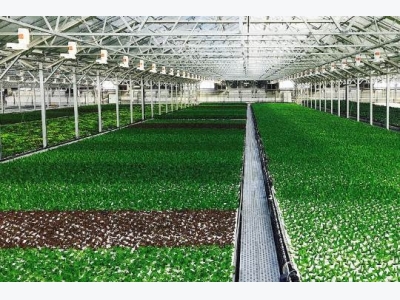Greenhouse cultivation in Iran up 38%

The area under greenhouse cultivation in Iran presently spans 12,157 hectares, which is 38% more compared to the period before August 2013 when President Hassan Rouhani took office.
This is according to the executive of Greenhouse Expansion Project undertaken by the Ministry of Agriculture.
Valiollah Bani-Ameri added that the ministry plans to increase the country’s greenhouse area to more than 48,000 hectares by the end of the 20-Year Vision Plan (2005-25), IRNA reported.
The official noted that the ministry expects to produce 21 million tons of agro products in greenhouses per year when the project is completed, Mehr News Agency reported.
According to Bani-Ameri, Iran ranks second globally in the expansion of greenhouse area after Mexico.
Ali Ashraf Mansouri, the head of Tehran’s Agricultural Jihad Organization, said the area under greenhouse cultivation in the province amounts to more than 3,150 hectares, accounting for more than a quarter of all greenhouses in the country.
“Iran produces 1.55 billion cut flowers per year with Tehran Province accounting for 850 million, or 57% of the total sum. The global production of cut flowers stands at more than 10.02 billion annually,” he said.
Có thể bạn quan tâm
 Long An aims to up dragon fruit exports
Long An aims to up dragon fruit exports In order to expand the dragon fruit-export market, the province has made detailed plan to develop growing areas according to GlobalGAP and VietGAP standard
 Vietnamese agricultural products introduced in Ukraine
Vietnamese agricultural products introduced in Ukraine Vietnam’s key agricultural products were introduced in Ukraine during the Food Expo 2017 that opened in Kiev on November 23
 Farmers create innovative machines to save time, cost
Farmers create innovative machines to save time, cost The innovations are bringing a new face to the agricultural sector because they save time and costs, and simplify cultivation activities.